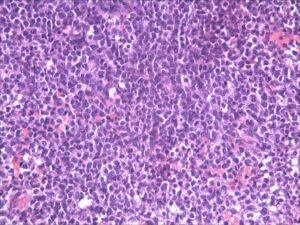Grayson’s Syndrome is a mitochondrial disorder that is highly uncommon. This illness, also known as Grayson Wilbrandt corneal dystrophy (GWCD), is one of the most uncommon kinds of corneal dystrophy, an eye disease. It is caused by a lack of a chemical called NADPH in the body.
This syndrome is defined by the presence of various opacification patterns in the Bowman layer of the cornea. This layer of the cornea extends anteriorly into the epithelium, with visual acuity ranging from diminished to normal. This condition is often caused by a homozygous mutation in the NADK2 gene on chromosome 5p13.

Symptoms
Visual impairment is the most prevalent symptom of Grayson’s Syndrome. This is caused by the deposition of material in the Bowman’s layer of the cornea. Typically, the center of vision becomes hazy, although peripheral vision may stay relatively clear.
Eye discomfort, corneal ulcers, and erosions resembling blisters are other Grayson’s Syndrome symptoms. The discomfort might create the sensation that something is always in the eye. Lesions and erosions are able to cause corneal edema and discomfort. As lesions form and heal, the corneal surface becomes uneven and scarred. This adds to the deterioration of visual acuity. The illness worsens with age and the severity of the symptoms increases.
Consult your doctor immediately if you have vision changes or other eye-related problems. These issues may result from a multitude of causes. In order to properly handle the issue, it is essential to get an appropriate diagnosis.
Treatment
If symptoms are minor, there may be no need for therapy. Your physician may propose routine monitoring to detect illness progression.
Doctors typically prescribe lubricating eye drops, eye ointments, and antibiotics to treat irritation, sores, and erosions. As the cornea recovers, special contact lenses can also protect it from irritants. In some instances, laser treatment or ablation can be used to enhance vision and treat erosive lesions and scarring. However, because the condition is progressive, both the symptoms and the scarring will increase over time.
In extreme circumstances, a corneal transplant may be a possibility. It entails the removal of the diseased cornea and its replacement with a donor cornea. Recurrence is possible in the fresh graft.



